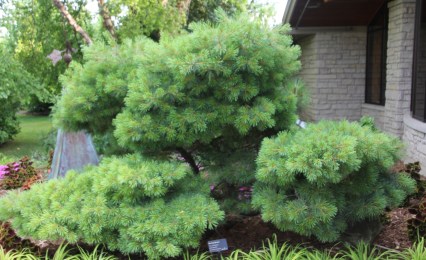Dear Consumer Reports,
A good friend of mine, Linda Chalker-Scott, recently reviewed some of your recommendations on weed control and found them wanting. I concur with Linda’s assessments, but I feel the need to take her critiques a bit further because:
#1 The article that Linda reviewed made a recommendation which is not only questionable in terms of its efficacy, but also its safety.
#2 You recently published another article on a very similar topic which is misleading.
Let’s start with #1
In the article Beat Those Weeds (Which was, somewhat ironically, published in the YOUR ADVOCATE section of your June 2015 magazine) you list clove oil as a useful treatment to kill the cut stumps of barberry and kudzu (you do note for one of these plants that repeat applications may be necessary). As someone who has tested clove oil products, I can assure you that trying to use these products to kill the root systems of these weeds is an exercise in futility. Clove oil is a contact poison that kills what it touches. It is not systemic and will not kill the whole plant because a cut end is treated. Roundup is a systemic and will work this way.
I certainly understand wanting to avoid Roundup. I am fully aware of its recent designation as a probable carcinogen (though I wish your magazine had spent some time explaining exactly what this means to your readers). On the other hand, I wonder why you couldn’t provide some more realistic information on how well your recommendations were likely to work, or offer some better organic remedies such as digging out the root systems of these plants (which is, admittedly, a tough job).
The above paragraph is just me voicing my concern about the efficacy of a treatment you recommended. If the treatment you recommend doesn’t work, no big deal. Right? At least you’ve helped us to avoid using Roundup because, as you say, its health effects aren’t understood. OK, I’ll buy that as a reason for not using Roundup. But if that’s your reason for avoiding Roundup, how can you possibly recommend applying clove oil?
Sure, clove oil is organic, but it is composed primarily (usually 70-90%) of eugenol, a naturally occurring chemical. Have you ever checked out the MSDS for eugenol? It is classified as a carcinogen by RTECS (Registry of Toxic Effects of Chemical Substances). Not only that, its acute toxicity is generally considered to be higher than that of glyphosate (the active ingredient in Roundup) and doses as low as 5-10 ml have caused near fatal reactions in children.
Here are a few links to back up what I’m saying, a good deal of which is available on Wikipedia if you’re feeling lazy.
http://www.ncbi.nlm.nih.gov/pmc/articles/PMC1029532/
https://www.spectrumchemical.com/MSDS/TCI-A0232.pdf
http://www.ncbi.nlm.nih.gov/pubmed/12778213 (Pay particular attention to the mouse studies)
This is nuts! I have to admit that I am not particularly concerned about either glyphosate or eugenol if proper equipment is used and directions are followed, but there are people who are, and they have a right to be. Please Consumer Reports, if you’re going to protect us from Roundup, then have the decency to avoid recommending products that can potentially have effects that are similar or even worse, despite the fact that they are organic. As an advocate for consumers it would be great if you could help protect them by spreading the inarguable message that organic does not necessarily mean safe. Thought and discretion on the part of the consumer are still required, especially when products intended to kill or injure living organisms are being recommended.
Now on to #2
In your August 2015 issue, again in the YOUR ADVOCATE section, you post a letter from David Stone about using a vinegar, Epsom salt and soap mixture to control weeds instead of Roundup. In it you confirm that this mixture works and also suggest a citrus-oil based herbicide.
As someone who has conducted trials on the homemade concoction in the letter, I can tell you that it does burn down weeds, but that Roundup is much more effective because it kills the roots of the plant. Adding Epsom salts to an herbicide is a mistake because, over time, repeated applications of this herbicide will increase the amount of salt in the soil (Epsom salt is, after all, a type of salt) and could damage other plants in the area. Why not just recommend the most effective, safest, and easiest to use herbicide available? Pull or dig the weeds out.
Thank You for your attention,
Jeff Gillman Ph.D.
(Just for the record, my Ph.D. is in horticulture. I also have a Master’s degree in entomology, and over 20 years of professional experience working with plants. I would appreciate knowing the qualifications of the experts you are using for the YOUR ADVOCATE section of your magazine and encourage you to post this information in the future.)
 Crazy plant of the day is this: Pereskiopsis spathulata! Which, I’ll admit, looks like a fairly generic succulent, but the cool thing is this is actually a cactus. A cactus with leaves. Most cactus have of course lost their leaves to increase their ability to survive in extremely dry conditions and rely on their stem for photosynthesis, but the genus Pereskiopsis is a bit of living evolutionary history with photosynthetic leaves still intact.
Crazy plant of the day is this: Pereskiopsis spathulata! Which, I’ll admit, looks like a fairly generic succulent, but the cool thing is this is actually a cactus. A cactus with leaves. Most cactus have of course lost their leaves to increase their ability to survive in extremely dry conditions and rely on their stem for photosynthesis, but the genus Pereskiopsis is a bit of living evolutionary history with photosynthetic leaves still intact.



























